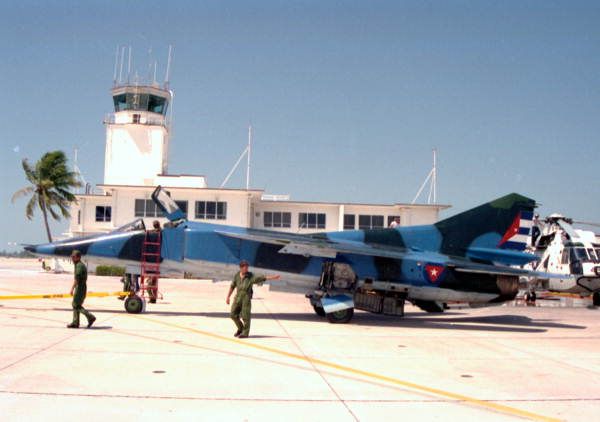On March 20, 1991, Orestes Lorenzo Perez, a Cuban Air Force pilot, executed a daring defection, flying his MiG-23 from Cuba to Naval Air Station Key West. Upon landing, he communicated in Spanish, seeking political asylum. His arrival, notably undetected by U.S. radar, marked the beginning of an extraordinary journey.

The MiG-23, a Soviet-era fighter designed to succeed the MiG-21, boasted advanced radar and fire control systems, enabling beyond-visual-range missile engagements. Its variable-sweep wings, reminiscent of the General Dynamics F-111, combined with robust landing gear, allowed for operations from short, austere runways. With over 5,000 units produced, the MiG-23 saw widespread export, including to the Cuban Air Force, which operated various variants until the late 2010s.
Perez’s defection involved circling NAS Key West three times, waggling his MiG-23, or “Flogger” as NATO designated it, to signal peaceful intentions. He claimed to have “borrowed” the aircraft, emphasizing his desire for freedom, despite his lack of English proficiency.
His story extends beyond the initial defection. Perez’s subsequent return to Cuba to rescue his family, detailed in his 1994 book and extensively documented in publications like The Ledger, captivated public attention. Friends considered his rescue mission a near-suicidal undertaking.
Perez’s path to defection began with a scholarship to the Soviet Union, where he trained on the Aero L-29 Delfin and MiG-21. He served in Angola, supporting the Marxist government, and later returned to Cuba, stationed at Santa Clara Air Base. Witnessing the oppressive regime’s propaganda and restrictions, he resolved to escape.

On March 20, 1991, he departed, promising his wife, Victoria, to return. After landing in Key West and securing political asylum, he initiated a campaign to bring his family to the U.S. Despite U.S. visas, the Cuban government denied their departure, placing them under surveillance for 21 months.
Faced with this impasse, Perez devised a daring rescue plan. With assistance from the Valladares Foundation, he acquired a 1961 Cessna 310. Despite limited Cessna experience, he embarked on a low-altitude flight from the Florida Keys on December 19, 1992.
His wife, guided by a note, met him at a designated location near Havana. Perez landed, retrieved his family, and returned to Marathon, Florida, within two hours. This remarkable act of courage solidified his place among the few Cuban military pilots to defect during the Cold War.
Perez and his family eventually became U.S. citizens. The MiG-23 was returned to Cuba, while the Cessna was later destroyed in a hurricane. Adding to the historical context, the MiG-23’s variable-sweep wing design was a technological marvel of its time, allowing for both high-speed interception and low-speed maneuverability. This feature, combined with its powerful radar, made it a formidable interceptor. Perez’s intimate knowledge of the MiG-23’s capabilities, gained through his training in the Soviet Union, was instrumental in his successful defection.

